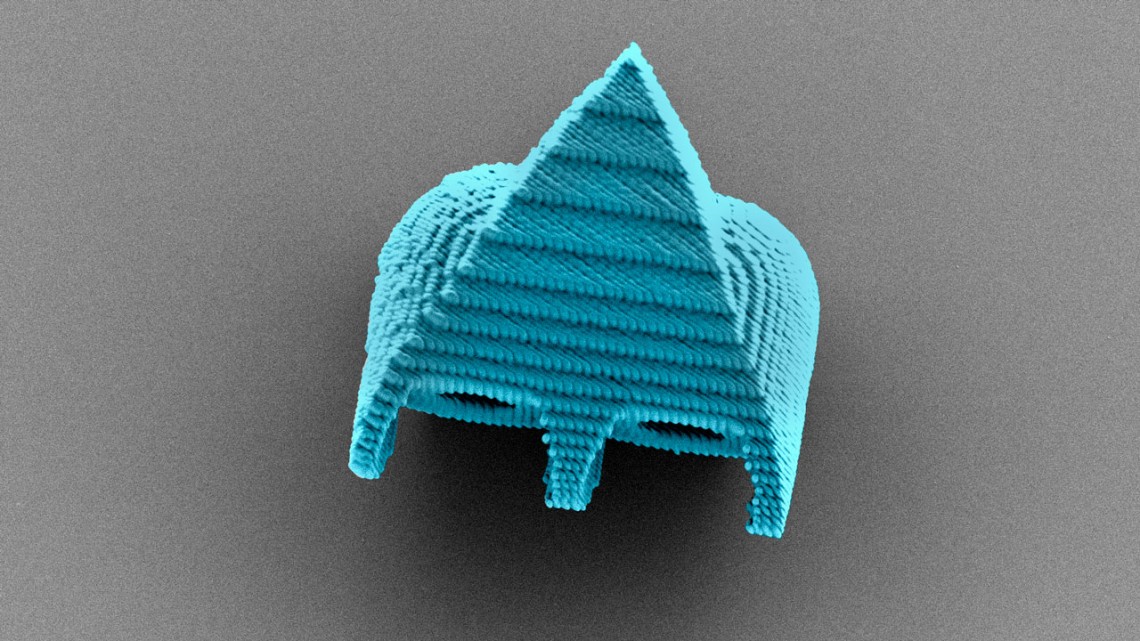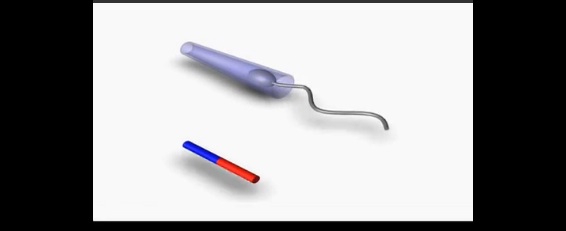“Micro-swimmers”: Tiny bots could soon deliver medicine through the bloodstream

- Scientists are exploring ways to deliver medicine to specific targets in the body by using microrobots that swim through the bloodstream.
- A team of researchers at Cornell University has developed a type of “micro-swimmer” that’s powered by ultrasound waves.
- Swarms of these minuscule bots could someday be coursing through patients’ bodies, delivering small but effective doses of medicine to specific sites.
Developing new ways to deliver medicine is one of the most exciting potential applications of nanotechnology. The idea is that swarms of tiny bots may someday swim through the human body and take medicines directly to their target. This would enable people to take smaller but more effective doses of medicine, ideally leading to fewer side effects and toxicities because the medicine wouldn’t have to travel through the entire bloodstream to reach its intended destination.
Delivering medicine in this way may soon be possible. Inspired by the ways cells move throughout the body, a team of researchers from Cornell University has developed triangular, 3D-printed, cell-sized micro-swimmers. Aside from being very cool, the bots are free of weighty batteries — propulsion comes from the outside in the form of ultrasound waves that control two tiny air bubbles on the bots’ backsides. The researchers described their work in a paper published in the journal Lab on a Chip.
Natural inspiration
The natural world can inspire innovative technologies. The French aviator Jean-Marie Le Bris, who built and flew one of the world’s first gliders, got his idea for a flying machine from watching the graceful flight of the albatross. In the 1940s, the Swiss engineer George de Mestral was walking in the Alps and noticed how burdock seeds clung stubbornly to his woolen clothes, sparking the idea to create Velcro.
The new development was similarly inspired by nature, but on a much smaller scale. For more than a decade, the team has studied the ways that microorganisms such as bacteria and cancer cells communicate and migrate within the body. At these microscopic scales, natural mechanisms can teach scientists a lot. After all, cells like sperm and bacteria — both of which inspired the design of the micro-swimmers — have honed their unique functions over millions of years of evolution.
To develop the micro-swimmers, the researchers first experimented with a bacterium-shaped swimmer with a wiggling flagellum that could move the bot forward, but they eventually hit a dead end. However, within six months of gaining access to NanoScribe — a laser lithography system that prints 3D structures directly on photosensitive resin — the researchers developed the bots’ current form.
The micro-swimmer’s most critical design feature is the pair of cavities etched into its back. Because the resin from which the bot is made is hydrophobic, when it’s submerged in liquid, an air bubble is trapped in each cavity, one of which is bigger than the other. These bubbles are, in a sense, the micro-swimmer’s engine.
The micro-swimmers are moved by ultrasound waves directed at the bots from the outside, eliminating the need for the bots to lug an internal power source. The sound waves essentially power the air bubbles. Ultrasound waves are super high-pitched sounds, beyond the range of human hearing, so they’re silent to us (if not dogs). This makes them viable for use in lab and clinical settings. The U.S. Food and Drug Administration considers them safe for clinical studies.
When ultrasound waves are aimed at the bubbles, it excites them, causing them to produce vortices that push the bot forward. Although there have been other experimental single-bubble microbots before, the team behind the recent study is the first to utilize a pair of bubbles, affording them a new level of navigational control.
By changing the resonating frequency of the ultrasound waves, the researchers can generate more, or less, forward motion on either side of the bot, or tune the frequencies so that the bubbles push equally. In a manner similar to the way a rower moves or turns a rowboat by adjusting the force of each oar, the researchers can easily direct the bot where they want it to go by working the bubbles individually or together.
Swarms of micro-swimmers
Once the resin material is replaced with something biodegradable, swarms of medicine-carrying micro-swimmers could theoretically be deployed in a patient’s body without causing harm. Sending in swarms of the micro-swimmers is key to the researchers’ strategy, as study co-author Mingming Wu told the Cornell Chronicle:
“For drug delivery, you could have a group of micro-robotic swimmers, and if one failed during the journey, that’s not a problem. That’s how nature survives. In a way, it’s a more robust system. Smaller does not mean weaker. A group of them is undefeatable. I feel like these nature-inspired tools typically are more sustainable, because nature has proved it works.”





